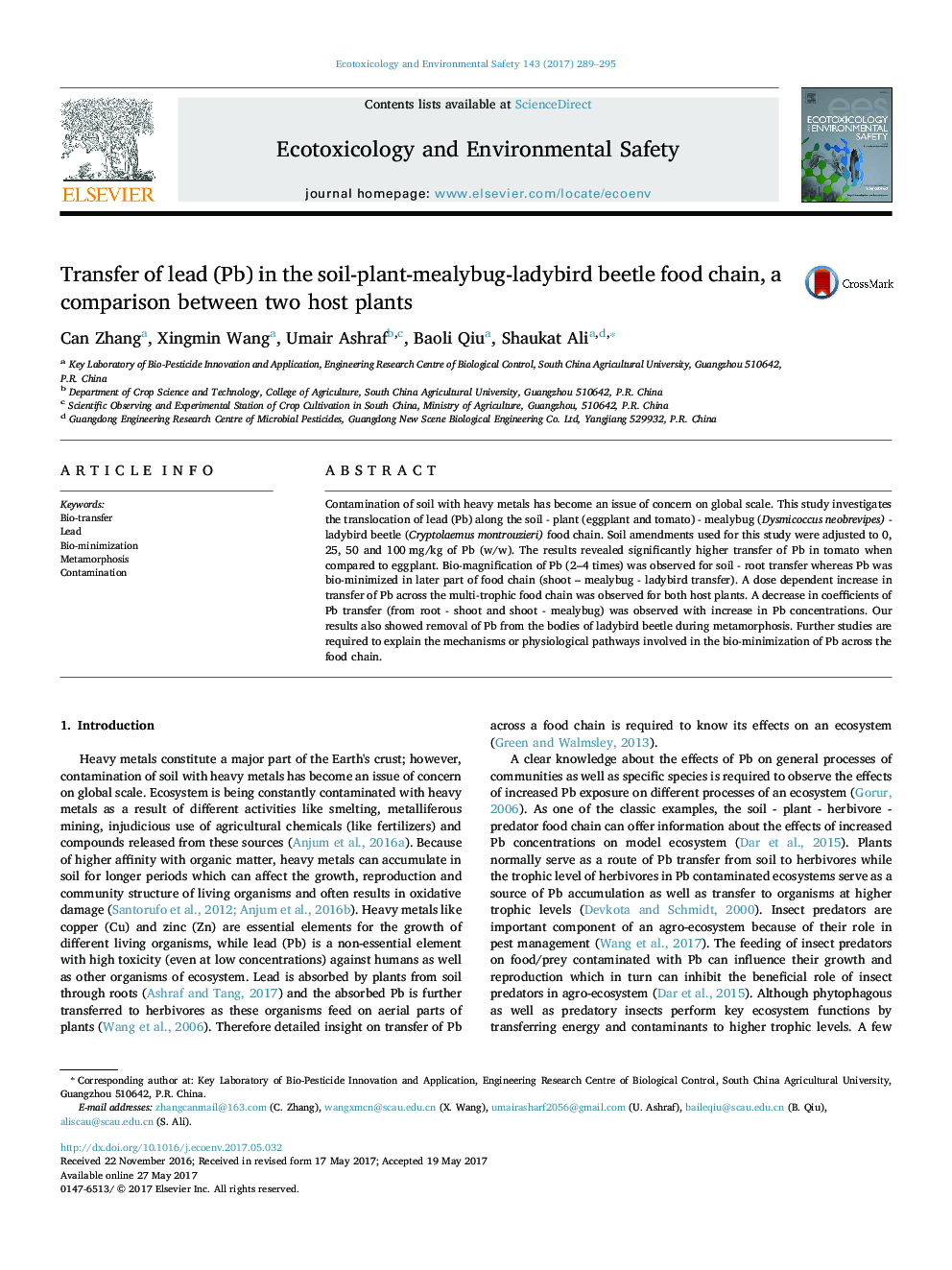| Article ID | Journal | Published Year | Pages | File Type |
|---|---|---|---|---|
| 5747584 | Ecotoxicology and Environmental Safety | 2017 | 7 Pages |
â¢The current research work investigates the translocation of Pb along the soil - plant (eggplant and tomato) - mealybug - beetle food chain.â¢Translocation of Pb from soil to plants was higher in tomato when compared to eggplant.â¢Pb transfer was effectively reduced in later part (shoot-mealybug-beetle) of food chain.â¢Pb concentrations in C. montrouzieri adults were lower than mealybugs depicting significant bio-minimization of Pb.â¢The percentage of Pb lost during metamorphosis through pupal exuviae decreased with increase in concentration of Pb amendments.
Contamination of soil with heavy metals has become an issue of concern on global scale. This study investigates the translocation of lead (Pb) along the soil - plant (eggplant and tomato) - mealybug (Dysmicoccus neobrevipes) - ladybird beetle (Cryptolaemus montrouzieri) food chain. Soil amendments used for this study were adjusted to 0, 25, 50 and 100 mg/kg of Pb (w/w). The results revealed significantly higher transfer of Pb in tomato when compared to eggplant. Bio-magnification of Pb (2-4 times) was observed for soil - root transfer whereas Pb was bio-minimized in later part of food chain (shoot - mealybug - ladybird transfer). A dose dependent increase in transfer of Pb across the multi-trophic food chain was observed for both host plants. A decrease in coefficients of Pb transfer (from root - shoot and shoot - mealybug) was observed with increase in Pb concentrations. Our results also showed removal of Pb from the bodies of ladybird beetle during metamorphosis. Further studies are required to explain the mechanisms or physiological pathways involved in the bio-minimization of Pb across the food chain.
Graphical abstractDownload high-res image (150KB)Download full-size image
